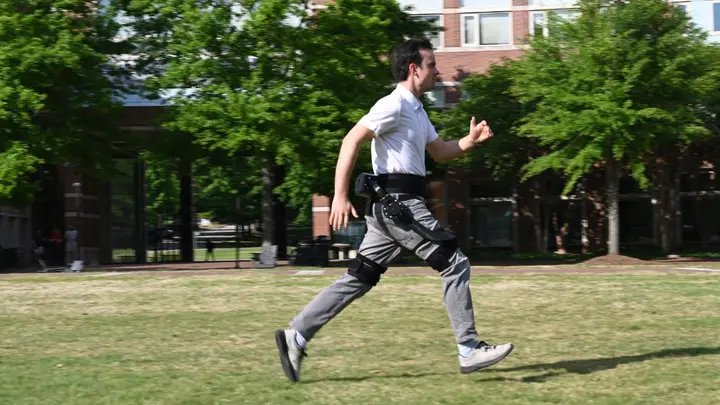AI-Driven Exoskeleton Revolutionizes Mobility and Performance
In a groundbreaking development, a new AI-driven exoskeleton is set to transform the way we approach physical labor and athletic performance. Utilizing cutting-edge technology, this exoskeleton not only lightens the load but also significantly elevates performance.
What is an AI-Driven Exoskeleton?
An AI-driven exoskeleton is a wearable mechanical device that integrates artificial intelligence to assist and enhance human movements. By combining robotics with machine learning algorithms, these exoskeletons can adapt and respond to the wearer’s actions, providing additional strength, endurance, and precision. The exoskeleton is designed to support a range of activities, from industrial tasks to athletic endeavors.
Key Features and Benefits
- Weight Reduction: The exoskeleton helps redistribute weight, making heavy lifting and carrying tasks significantly easier and reducing the risk of injury.
- Enhanced Performance: By augmenting natural muscle movements, the exoskeleton allows for improved strength and endurance during physical activities.
- Adaptive Technology: The AI-driven system learns and adapts to the user’s movements, providing customized support and assistance in real-time.
- Versatility: Suitable for a wide range of applications, from industrial use to medical rehabilitation and even sports.
- Safety: Increasing stability and reducing muscle fatigue, the exoskeleton minimizes the risk of strain and injury.
How the AI-Driven Exoskeleton Works
The exoskeleton operates through a combination of sensors, actuators, and AI algorithms. Here’s a step-by-step overview:
- Sensor Input: The exoskeleton is equipped with various sensors that detect the user’s movements, including accelerometers, gyroscopes, and pressure sensors.
- Data Processing: The AI system processes the sensor data to understand the user’s movements and intentions.
- Actuation: Based on the processed data, the exoskeleton’s actuators provide the necessary support and assistance, enhancing the user’s muscle power and precision.
- Adaptive Feedback: The system continually learns and adapts to the user’s movements, optimizing performance and efficiency over time.
Applications of AI-Driven Exoskeletons
The versatility of AI-driven exoskeletons makes them applicable in a variety of fields:
Industrial Sector
In industrial environments, exoskeletons can significantly reduce the physical strain on workers who perform repetitive and strenuous tasks. By lightening loads and improving posture, these devices can help prevent injuries and enhance productivity. Tasks such as lifting heavy objects, assembling parts, and operating machinery become much safer and more efficient.
Medical Rehabilitation
For individuals recovering from injuries or surgeries, exoskeletons provide invaluable support. They assist in physical therapy by promoting correct movement patterns and helping patients regain strength and mobility. The exoskeleton’s adaptive capabilities ensure personalized support, tailored to the specific needs of each patient.
Athletics and Sports
AI-driven exoskeletons are also making waves in the world of sports. Athletes can benefit from enhanced performance and reduced risk of injury. By providing additional strength and endurance, exoskeletons enable athletes to train harder and achieve new levels of performance. The technology is also used for injury prevention, ensuring that athletes maintain proper form and avoid overexertion.
Challenges and Future Prospects
While the benefits of AI-driven exoskeletons are clear, there are still challenges to address:
- Cost: The development and production of exoskeletons can be expensive, potentially limiting widespread adoption.
- Usability: Ensuring the devices are user-friendly and comfortable for prolonged use is crucial.
- Regulation: Regulatory standards and guidelines need to be established to ensure safety and efficacy.
Looking ahead, advancements in AI and robotics are expected to further enhance the capabilities and accessibility of exoskeletons. As technology evolves, these devices will become more affordable, versatile, and integrated into everyday life.
Conclusion
The advent of AI-driven exoskeletons marks a significant leap forward in mobility and performance enhancement. By blending artificial intelligence with human physiology, these innovative devices promise to revolutionize the way we work, recover, and reach our peak performance. Whether in industrial settings, medical rehabilitation, or sports, the future of human augmentation looks incredibly promising.
Source: Fox News Tech

Hozzászólások